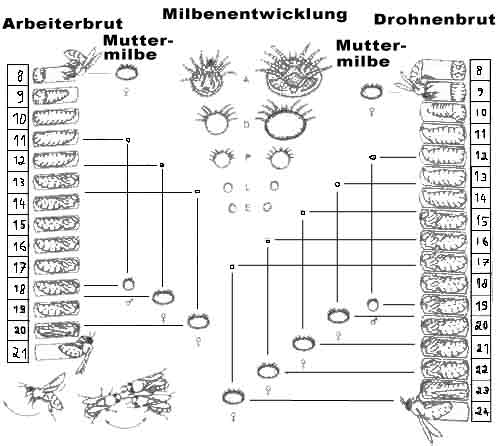I noted that the Colony Losses thread seemed to have dwindled recently like a queenless colony population in late spring! But I see there is still life there!! Great!
I had a read through the various reports and although there is a lot of obvious “Do not do again stuff”; there is also lot of good info there:-
Linchpin makes an excellent observation that the newer beekeepers erring on the side of caution and leaving the bees the rewards of their hard work for them to enjoy gets a good result. I have been called out to a number of abandoned apiaries over my some years in the craft and without fail the colonies in question are bursting with bees and stiff with honey. Obviously so well provisioned that they are forced to swarm at the first spell of settled weather in early May. Re-queening themselves every year!
Considering our Mull colleagues - A proximity to the sea according to the rules of a Maritime climate results in relatively higher ambient temperatures than those occurring farther inland – those few degrees Celsius higher temperatures could just be a critical for successful over-wintering.
The norm for most colony losses reported appears to be very small populations in late winter/early spring – this could be either disease or a queen related condition – poor quality queen, old queen, poorly mated queen, queen debilitated by Varroa predation, beekeeper damaged queen, mal-nourished queen, queen well mated, but too late in late summer to build to successful over-wintering strength or even just an intrinsically illness prone queen – like some humans who never really enjoy good health!
Poor disease control reports, almost smacking of diminished responsibility – do not ever be tempted to miss a Varroa treatment – no obvious mite fall is a trap for the unwary. Many beekeepers, even with 5 or 6 years of Varroa under their belt have paid the price of complacency! Keep your guard up! The mite fights dirty!!
An interesting point about drones - beekeepers for many years and even now still talk about stimulative feeding. This is in my opinion a misnomer! Ian Craig will tell you that he rarely needs to feed his bees on double brood boxes – but the colonies still produce drones on schedule. Colony ‘prosperity’ as a term is closer to the drone rearing situation than ’stimulation’. The first event in colony swarm preparation is drone rearing, which will only occur when the colony is feeling prosperous – the classic ‘feel good’ factor.
Nellie has noted the successful over-wintering colony symptom – the colony making rapid inroads into its stores as it converts honey and pollen into brood as the queen in early spring increases her rate of lay from tens of eggs/week in mid winter to hundreds of eggs/week as the days lengthen and temperatures rise – that is the theory anyway!! Feeding is essential at this juncture to maintain brood rearing impetus and avoid colony starvation.
My own experience this year centred round the failure of my sugar bag winter feeding system after 36 successful years using it. In retrospect heavy sugar syrup feeding in September could have saved many colonies – never to old to learn!
Now feeding 1 :2 syrup steadily to exploit the massive catkin pollen income. I have fumigated my spare brood comb religiously for many years with initially 80% acetic acid and lately 85% formic acid – my microscope, x1000 tells me so far so good, re the nosemas – N. ceranae requires a comparison with N. apis to differentiate - N. ceranae is a mdget compared to N.apis but its shape is unmistakeable.
Travelling hopefully for increase – hope the favourable weather continues – to the end of May at least would be nice!




 Reply With Quote
Reply With Quote



Bookmarks